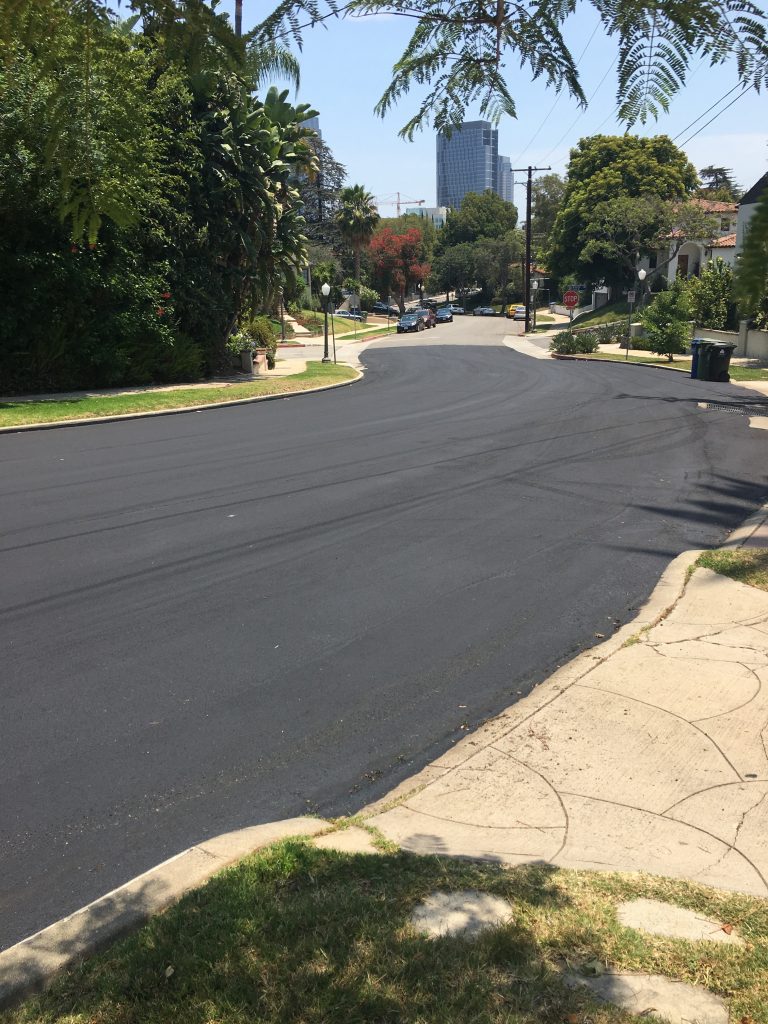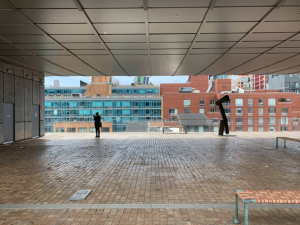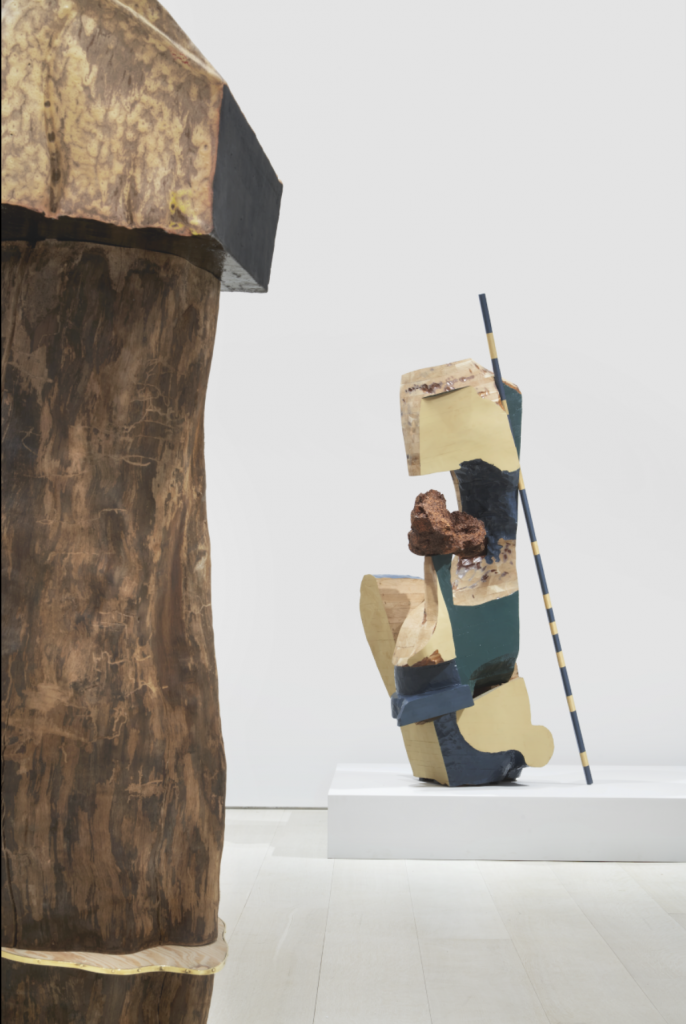I. THE NEW STAKES of the Everyday
Over the past several months, confined as we have been to our homes, a new concept of the everyday has come into view. This pandemic with all its horror and uncertainty has infused the lethal into the benign. Often regarded as a burden or a bore, everydayness has emerged as a high-stakes game under the conditions caused by COVID-19. Workplaces, public transport, schools, grocery aisles, restaurants — all have become exotic, dangerous terrain. As different economies consider opening in phased or “low-key” ways, many museums and cultural offerings will remain long-lost companions, whose absence is not made much less acute with the advent of online gallery spaces. With so many touchpoints erased, so too goes the possibility for chance encounters, the unanticipated, and the multisensorial that fixes experiences in memory.
II. A Space for the Unplanned
Visiting the Netherlands in my early 20s, I dedicated an afternoon to the Stedelijk Museum in Amsterdam. In its snug corridors and chambers, I drifted from wall to wall with a steady kinetic bounce, taking in the pageantry of colors, smudges, and shapes. Moving from frame to frame, my impatient eye barely distinguished one screen of abstraction from another.
Until I came across the pregnant woman towering above a Russian countryside. I noticed, in the triangular facade of a barn, there was a pale hair a few centimeters long, half-buried in a swish of white-gray paint. The hair, unintended and out of place, launched my imagination. A curiosity. To whom did it belong? The artist, his wife, someone else? Or simply the brush?
This canvas stowaway found on Marc Chagall’s The Pregnant Woman/Maternity (1913) acted as a lever that paused my absentmindedly alighting here and departing there. Instead, the work prompted me to contemplate what motherhood in rural Russia on the cusp of the First World War might have entailed. The painting was an aperture that brought into view a space to contemplate something entirely foreign. And yet, the uncooperative hair felt prosaic, both poignant and banal.
The everyday materiality of the embedded hair also brought my attention back to the room with my fellow gallery-goers and to a detail in the neighboring The Fiddler (1912). It, too, was interlaced with everyday life, painted as it was on a tablecloth.
Here and there, the quotidian crept in and lent so much nearness to the creator of the work that a rendition on a screen couldn’t have conveyed. The commonplace found in an unexpected place.
This unintended (or otherwise) physical relic can tie us to a moment, encompassing both the progenitor who created the scene and anyone who happened to notice it thereafter. Regarded as a single bounded moment that can then spin out in imagined narratives in multitudinous ways. A kind of analog worlding.

The startling of senses can produce lasting, unshakeable impressions. Within artmaking, there is a gerund and an artifact, and the latter resides in a space best engaged by the unmediated eye. In mediated viewing, as we observe in pixels, the corrosion of immediacy and detail is complete. Gazing into Vantablack delivers a supernatural jolt. RGB (0,0,0) doesn’t do it justice. It is why Anish Kapoor and Stuart Semple engage in such bitter feuds over the blackest black and the pinkest pink. This kind of hyperrealism is most impressive when conjured through the intensity of pigment. A screen, even at remarkably high resolution, can only deliver a fraction of this absolute darkness or this visceral vibrancy.
The ability to recall the intimate texture of experience is so often linked to the sensory, too. A journey traveled over a well-paved road doesn’t easily cleave to memory, rather it is the detour or dérive that causes us to dwell in a particular place. Like a tire that spins back and forth in the same muddy groove, memories bear deeper and more entrenched in the mind. The digital experience, by contrast, dislodges the conceptual from the visceral. The latter can’t be fully accessed, and it might actually become a point of distraction from the main event — the focus of visceral attention might wander from the work on to your own body, straining eyes, an uncomfortable chair, a smell from the kitchen. The latter becomes shrouded and cannot be fully accessed.
In early March of this year, before the era of social isolation, I enjoyed what turned out to be my final cultural outing at the Pace Gallery’s new flagship building in New York. My friend and I entered through prodigious glass doors and strode across acres of expansive Chelsea square footage to attend the launch of an installation by friends of the Transformations of the Human (ToftH) program. The scale, the openness, the cement and steel at once boldly signaled the gallery’s investment in their imposing presence and served to encase the work on display in a particular architectural frame, lending a shock-and-awe effect to the viewing experience.

Leaving the gallery, my friend and I decided it was safe to squeeze in one more exhibit before leaving for other commitments. We visited the Arlene Shechet solo exhibition on the second floor on the way down to street level.
In all forms of participation, there are experiences that can be navigated in terms of the already thought and known, and yet we cannot help but be derailed by the unexpected. Apollinaire likens thinking without conceptual constraints to being rendered helpless by a tickle.
Shechet’s work was profoundly surprising in the same way. It was entangled motion playfully captured in the resin, metal, wood, and ooze — a juxtaposition of the living and nonliving, the bursting and contained, the enmeshed and discrete. I’ve since revisited the exhibit that so moved me in person from my kitchen table. The fleshy and simultaneously brittle sculptures that made free associations jockey and vie in my mind, now only hummed.

III. Longing
Even though we long for the everyday poetics of togetherness, and cities and states are beginning to stress test the feasibility of opening the world again, it might be too much to ask for the immediate future to bring us together in enclosed galleries that — by virtue of their four walls —promote a pattern of crisscrossing that flouts the six-foot rule.
So how to encounter the errant hair, the at-hand tablecloth, the strange black of an otherworldly pigment, the materiality of sculpture? What would it take for life onscreen to offer this serendipity in the full haptic, experiential sense of the term? Can we find new artistic forms that can introduce error and serendipity into the technologies that otherwise allow us to access the world from the seclusion of home?
The challenge is not negligible, as technology and chance are often understood to be mutually exclusive.
How to overcome this challenge is a key theme of our experimental program at Transformations of the Human. A number of ToftH artist fellows engage with just these kinds of questions. Errorism, as Agnieszka Kurant might put it, is critical for finding ways to provoke accidental encounters that give rise to new technological discoveries. Her piece Conversions uses digital crowd-sourcing as her palette on a canvas of liquid crystal to generate unforeseen outcomes through (and in) mediated domains, outcomes that can’t be predicted or known in advance.
Nancy Baker Cahill has long grappled with intimate struggles related to violence, our shared environment, and the physical implications of power, suspended in the non-physical domain of VR.
Scent and the sensorium, their dominance over memory and meaning, have played central roles in the fecund work of Anicka Yi. As a ToftH artist, she has recently tended to the embodiment of AI, giving it a physical rooting in the botanical, not found anchored to a wall or in a confined space, but rather set free in the urban environs of the South Bank of London.
These artists are consciously introducing the unexpected, the biological, and the embodied into the nonliving, the rote, and the fixed. Much of their work moves from brick-and-mortar sites to screens, or to open spaces of freedom and possibility. They look for ways to consider all things — particularly those most taken for granted — in a new light.
COVID-19 has been a tremendous catalyst for rendering the everyday chance encounter rare and poetic. My hope lies in the artists and curators of these pages, that they might find ways to surprise. A hope for something unintended, unscripted to cross one’s path, a space, online or in the ether, where the incidental meets the deliberate. At least until we can once more embrace — with all its familiar chaos but none of its present-day virulence — the everyday.
¤
Tui Shaub is associate director for Transformations of the Human and an associate editor for Noema Magazine. Prior to joining the Institute, Shaub was chief of staff at the Los Angeles–based Nazarian Family Foundation and acted as articles editor at the World Affairs Journal in Washington, DC.
Feature Image: Installation view, Arlene Shechet: Skirts, February 28 – August 14, 2020, Pace Gallery, New York. © Arlene Shechet, courtesy Pace Gallery. Photography by Phoebe d’Heurle.
LARB Contributor
LARB Staff Recommendations
Updating the Human Algorithm
In the immediate wake of conditions brought on by the COVID-19 pandemic, Mashinka Firunts Hakopian discusses the urgency in cultivating nonhuman...
Life Lived On Screen: Philosophical, Poetic, and Political Observations
Tobis Rees considers the implications of a life lived on screen
Did you know LARB is a reader-supported nonprofit?
LARB publishes daily without a paywall as part of our mission to make rigorous, incisive, and engaging writing on every aspect of literature, culture, and the arts freely accessible to the public. Help us continue this work with your tax-deductible donation today!
:quality(75)/https%3A%2F%2Fdev.lareviewofbooks.org%2Fwp-content%2Fuploads%2F2020%2F08%2FIMG_9476_Original.jpg)